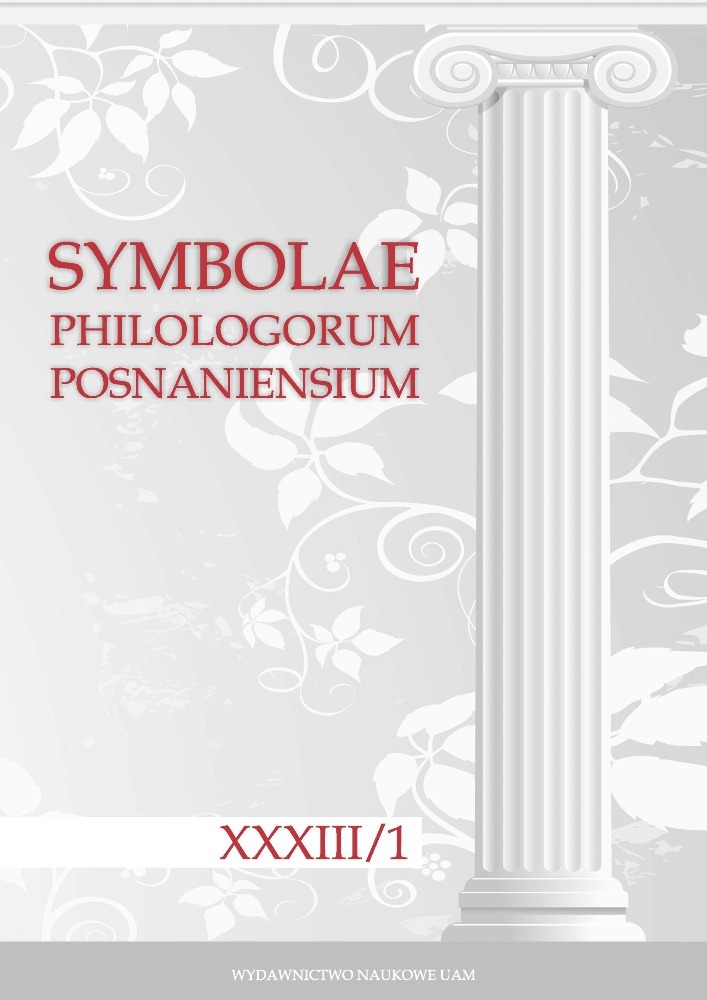Abstrakt
Dynamic equivalence is eagerly used by translators in works strongly rooted in the realities of the original culture of a text or saturated with various kinds of wordplay, especially if the text was created with the intention of performing it on stage. An interesting example of the use of functional equivalence and the consequences of such use is Choragus’ monologue, sometimes called parabasis, opening Act IV of Plautus’ comedy Curculio (v. 462–486). Choragus’ performance is primarily a catalogue of places in Rome, where specific types of people (swindlers, perjurers, pimps) like to gather. The topography mentioned in the monologue has a humorous overtone, which is largely due to the fact that Plautus’ audience knew these places mentioned on the stage and accepted their implicit associations as true. Therefore, to achieve a comparable effect in translation, it is best to use dynamic equivalence. The article discusses two variants of dynamic equivalence and their consequences. The first example assumes that the comedy will be staged in Poznań and the translation changes the topography of Rome to the topography of this Polish city. The disadvantage of this type of translation is that its reception is limited to an audience familiar with the topography of Poznań. Otherwise, this Plautine parabasis would have to be translated anew for each performance, taking into account the place of staging and the recipients of the translation. The second example extends the topography to the whole of Poland, but the application of affective equivalence (which evokes similar feelings to those evoked by the original) would require an accurate reading of the tastes of the audience and adjusting the appropriate topography to them, which seems almost impossible. The use of dynamic equivalence in the translation of the scene in question would therefore have to be verified with each performance, which discourages translators and encourages the use of formal equivalence.
Bibliografia
Plautus, Curculio, Revised Edition with Introduction and Notes by J. Wright, Norman–London 1993.
Plautus, Curculio, Edited and Translated by W. de Melo, London 2011, 219–313. DOI: https://doi.org/10.4159/DLCL.plautus-circulio.2011
Hejwowski 2004: K. Hejwowski, Kognitywno-komunikacyjna teoria przekładu, Warszawa 2004.
House 1997: J. House, Translation Quality Assessment: A model Revisited, Tübingen 1997.
Nida 1964: E. Nida, Toward a Science of Translating: With Special Reference to Principles and Procedures Involved in Bible Translating, Leiden 1964. DOI: https://doi.org/10.1163/9789004495746
Pisarska, Tomaszkiewicz 1996: A. Pisarska, T. Tomaszkiewicz, Współczesne tendencje przekładoznawcze, Poznań 1996.
Venuti 1995: L. Venuti, The translator’s invisibility. A history of translation, London–New York 1995.


